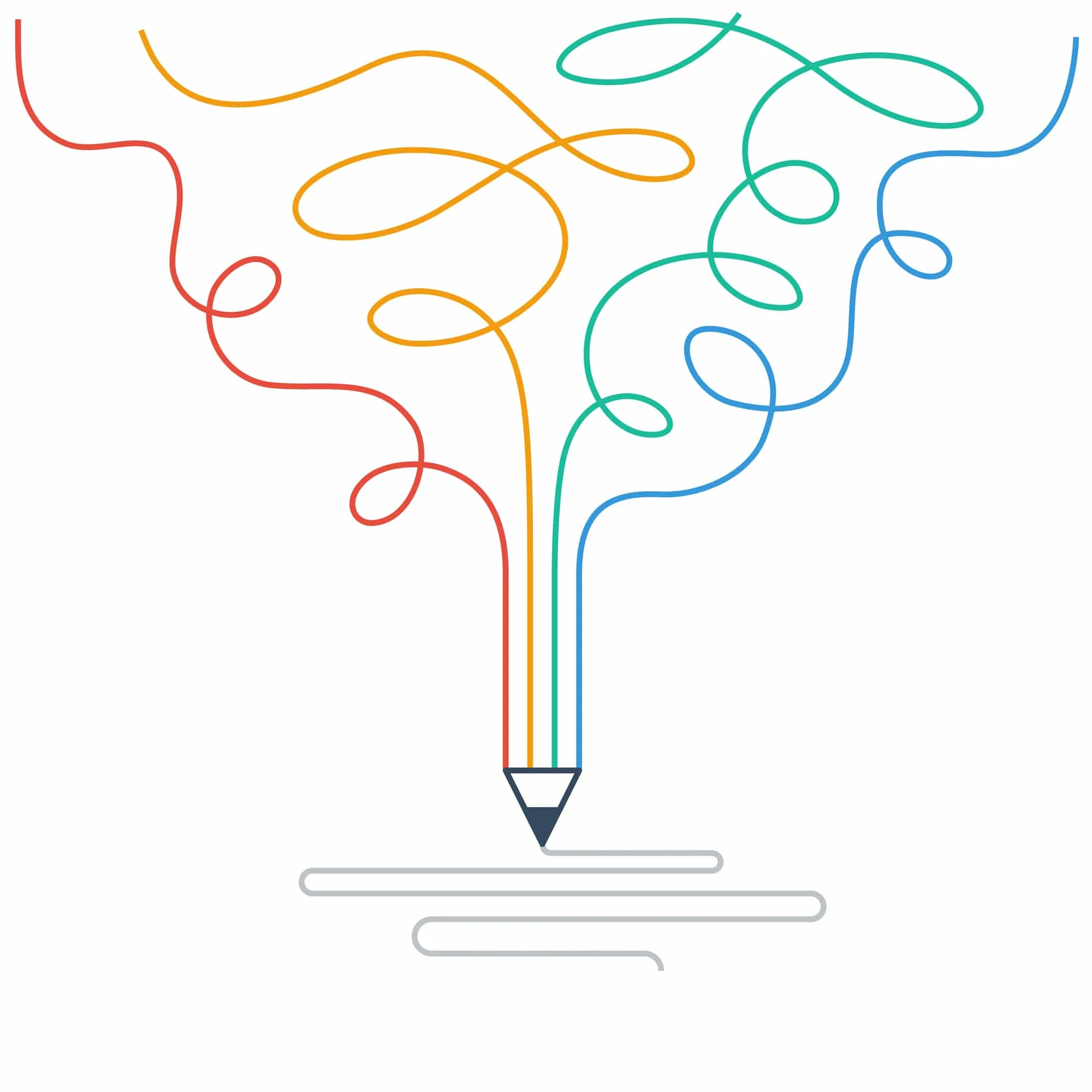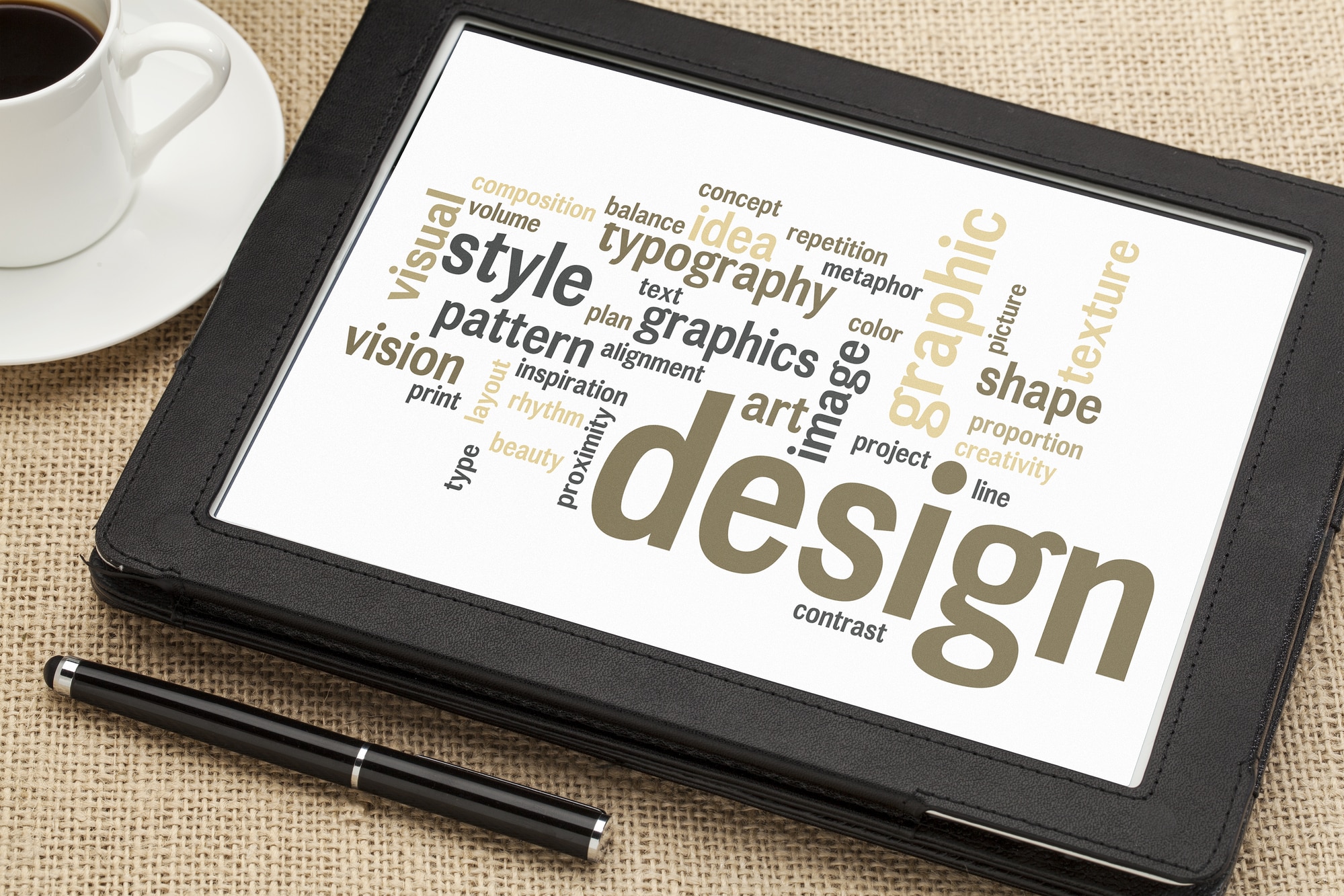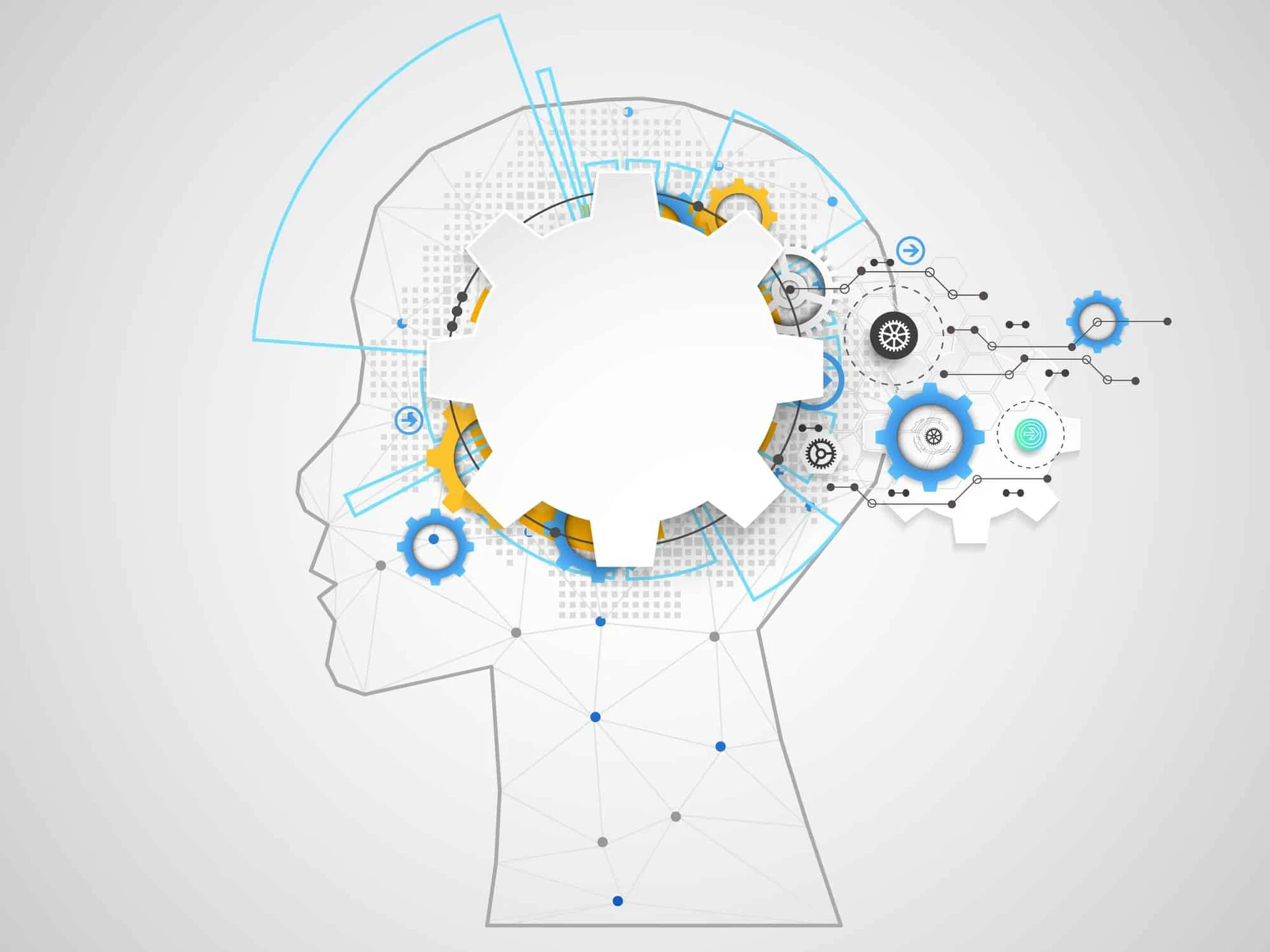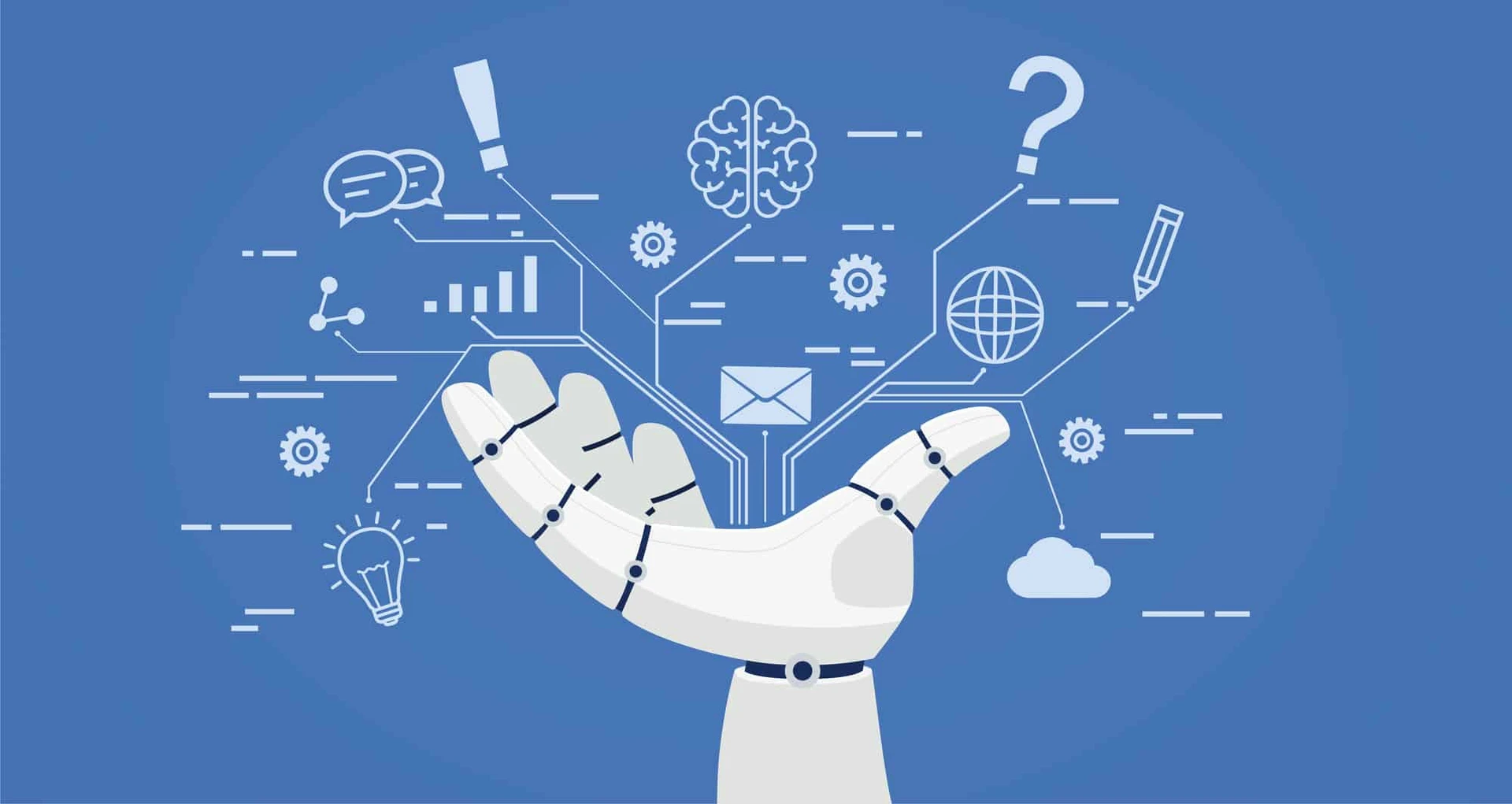Across a variety of industries, technology continues to grow in every way, particularly in artificial intelligence. Machines and humans are coming together in so many ways, now that AI is coming into the world of graphic design and art.
This “AI art” is a rising trend that’s affecting graphic design and illustration. And it’s becoming more and more a part of the design world, and it’s essential to understand these design trends when you’re looking for the best design services for your brand and business.
With AI technology, algorithms can play an active part in art and design creation, with artists using AI tools to manipulate their work. However, AI art generators can also be used by any layperson to create an image.
While the results can be very interesting and potentially even work to create something like a logo or character, AI graphic design still has its growing pains. There are pros and cons to consider as well as ethical and legal considerations.
But before we get to those, let’s dive into what AI art and design are.
What is AI Art and Design?

AI graphic design or art refers to the images you can generate by using an AI program that can take your prompts and use them to create something. It does this via an algorithm that scours existing sources, “learning” from them and manipulating its software to generate an image.
AI as a field is all about crafting software and machines that imitate human intelligence. It does this “thinking” through a set of pre-programmed algorithms. The algorithm analyzes thousands of images that exist online to learn about creating art and then use those references to replicate the process and conjure up an image.
Using code, an AI designer sets up rules that direct how the AI software will make the artwork, including guiding the AI to generate the work in a particular style and aesthetic and which content it should take inspiration from.
How is AI Used in Graphic Design?

For AI to be able to create an image, a programmer must teach it how to “understand” and replicate what it sees as examples of human art and design. Those in the “biz” refer to this as style transfer. The developers program the AI to identify certain artistic elements of a picture and then use those same elements under the parameters they set to generate an image.
While AI-created images are most commonly used to create illustrations and design, they could potentially be used in other artistic fields like music and video as well.
So, that’s the rough essentials of what makes up AI graphic design. The algorithm takes existing sources on the internet, mashes them up, and makes its own tweaks, to come up with an image that fits the entered prompt.
What are the pros and cons of this type of AI program? There are many to consider, so let’s get started with the pros.
Pros- How We Could Use AI Art Generators

AI could bring a lot to the design world, but for the community to use the tool in the best way, there is a lot we need to break down and understand. To start, it could be better to think of the programs as augmentations and tools, as opposed to replacements, for the hard work graphic designers provide.
Using AI generators in the best way should be about optimization and speed. Designers working with AI can use AI generators to come up with rough drafts and sketches that they’ll then use as a reference to create original work. Analyzing the huge amounts of data out there and suggesting design adjustments can be done a lot quicker with AI, allowing a designer to choose the best adjustments based on that data and create multiple prototypes that both the artists and clients can A/B test.
Speedy design prototyping that’s in alignment with a company’s design system could save an artist a lot of time, and time is a big consideration for both designers and clients. By using the technology to create drafts and options, an artist can save time on actually drawing up those designs that a client may not like. That way, the designer focuses on creating an image based on only the client’s favorite things about the various AI references.
Designers could also potentially use AI for product localization, like creating a graphic in multiple languages. Netflix uses this type of “augmented intelligence system” to translate show banners into several languages. The system “learns” the master version and almost instantly updates the text and localized pieces. All a designer has to do is approve or reject the changes and, if necessary, manually adjust them, saving a lot of time.
In these types of situations, prototyping and mass duplication, AI generators could be very helpful. Though it’s important to note that the artist is still doing the actual creation of the final design asset, which we’ll get into a bit more below.
Cons- The AI Design Controversy
Not everything about AI generators is great. There are issues with the ethics and use of these designs that have become a large talking point as the technology becomes more popular.
Let’s take the Colorado State Fair of 2022 as an example.

Quite a bit of controversy and outrage accompanied the fair’s art competition when an AI-generated piece took first prize. The winner, Jason M. Allen, created his piece “Théâtre D’opéra Spatial” using MidJourney, a popular AI generator.
He won the first prize in the “digital arts/digitally-manipulated photography” category. Allen stated that his piece took over 80 hours of manipulating the AI and sorting through thousands of resource images.
While some artists sided with Allen, saying that using the generator was similar to using Photoshop and digital tools, others did not. One artist stated, “This is like letting a robot participate in the Olympics.” Many took a similar stance, stating that the piece was an unfair winner because of the creativity and effort that went into other images.
And thus we find our problem. Is AI imagery art, is it yours, and can you copyright it or sell it?
The Ethics of AI in Art

Allen’s award showcases one of the most significant issues with AI generators from both an ethical and legal standpoint. Many people have pointed out that AI tools are using existing images online and using them without permission from the original artist.
As the world has already seen play out, artists can and do sue when another piece is significantly influenced by their own work to the point where people can say they’ve copied the original design. This is theft of intellectual property.
We don’t currently have laws in place to regulate how original images can be used in combination with AI generators, but many artists do not want a computer to be able to essentially copy their designs. In fact, recently, DeviantArt created a way for artists who upload to the site to mark their work as “NOAI,” which would, in theory, stop a generator from referencing their work.
The idea is that to remain compliant with the website’s terms of service, the AI generators combing their site must disregard pieces with the no-AI tag in their URL.
Other companies, such as Getty Images and the stock photo companies they own, have banned AI entirely. A Getty Images spokesperson told CyberNews, “Getty Images recently announced our decision to not accept AI-generated content across Getty Images, iStock, and Unsplash. There are open questions [regarding] the copyright of outputs from these models, and there are unaddressed rights issues [regarding] the underlying imagery and metadata used to train these models. It is important that we make content available to our customers that is free of these concerns and potential liabilities.”
It’s fairly easy to see why these companies and artists might be concerned about the copyright, intellectual property, and plagiarism issues associated with AI generators when you look at some of the pieces these programs have made. Many can be eerily similar to the original works of the artists, and if little refinement is made, look like copies.
Another concern is the fine print and terms associated with the generators themselves. They often state that while you retain the rights to and in use of your creations, your creations may also be used by anyone else in the app. Prisma Lab’s terms state it has the “perpetual, revocable, nonexclusive, royalty-free, worldwide, fully paid, transferable, sub-licensable license to use, reproduce, modify, adapt, translate, create derivative works” from your images.
Lastly, copyrighting and standing copyrights are a concern. AI-generated images can’t be copyrighted as of now, and how you would do so isn’t clear. Who would the copyright belong to? The person who put in the prompt, the person who designed the AI, or the artist who created the original work that the AI is using?
This brings us to the current copyrighted or protected art that AI generators are using in their creations. Again, artists aren’t typically a fan of these creators not because they are gatekeeping and don’t believe that AI art isn’t art, but because they know that the AI isn’t producing its creations from scratch. It’s pulling information about art from existing works.
Say for instance if the humans behind AI art generators ensured they worked with willing participants who gave their consent to use their art to teach the machine. Then, it would be less concerning. The artists said it was okay to use their art. You need this type of permission to use art that doesn’t belong to you in any situation. That’s why stock photo libraries exist. These are for the express purpose of use by someone or something else.
But that’s not what happens. AI generators pull art from everywhere online it can freely view. But “freely view’ is not the same thing as free to use.
What Impact Will AI Have on Graphic Design?

Graphic design’s future could be affected by advancements in artificial intelligence (AI) and machine learning (ML). It already has been, and there are still several unanswered questions concerning how AI will impact this industry. It’s difficult to know precisely how AI will affect the graphic design profession as a whole because the debate is still going strong.
In the graphic design industry, AI has been disruptive. However, it will be hard for AI generators to replace the work that human designers can do because they’ll need human input and expertise to get the best results.
But the concern is understandable. If AI generators became mainstream, artists may lose the income they depend on to survive. Design itself will change if we switch to all machine-generated options instead of a person, and if the laws follow suit and become more strict, it might be difficult to create works with the originality humans are capable of creating. This would cause us to see overly generic designs.
How we communicate and design in the future will surely be affected by the increasing number of AI generators out there. Prototype generation and mock-up creation have already started within the industry and will likely impact visual design habits.
However, these programs aren’t a substitute for humans yet. To get realistic drawings and unique designs, you still need the skills of a professional designer or artist. The work put out by AI generators still has its issues, and from a commercial standpoint, it’s not safe enough to use in branding and promotion as of now. While the tools are impressive for what they can do, getting exactly what you want and ensuring proper placement and proportions will still take a human eye. (You’ve likely seen AI art that’s almost perfect except for the slanted mouth and crossed eyes.)
Conclusion

AI-powered art generators can streamline the editing and revision process when used as a prototype or mockup tool. You can use them to craft drafts to show clients or artists to cut back on the amount of back and forth necessary to create the desired design. It can be a fun “game” to entertain yourself or use for personal purposes, but the concern about where the AI is getting the work and how to copyright or safely use the designs is still problematic.
AI will likely change the entire graphic design industry but should only be thought of as a supporting tool. A human presence will likely always be necessary because of the unique skills and understanding that they possess, which computers just can’t replicate. So, when it comes to the future of AI graphic design, remember that these tools and services should be supplemental to the overall process and not be thought of as a replacement.
Companies looking to create eye-catching visuals and personalized designs or logos can use this technology to hasten the desired results as long as there is a human doing the actual creation. If you’re looking for a designer to create your illustrations, ads, and more who uses the latest technology while still providing the required human skills, Flocksy’s graphic designers are the way to go.
We can provide incredible results fast, and we never compromise on quality. What’s more, you direct any and all revisions needed. You’re sure to love the final outcome because you can chat directly with your artist about what you do and do not like and the style you’re looking for.
For more information about our unlimited graphic design service, click here.
